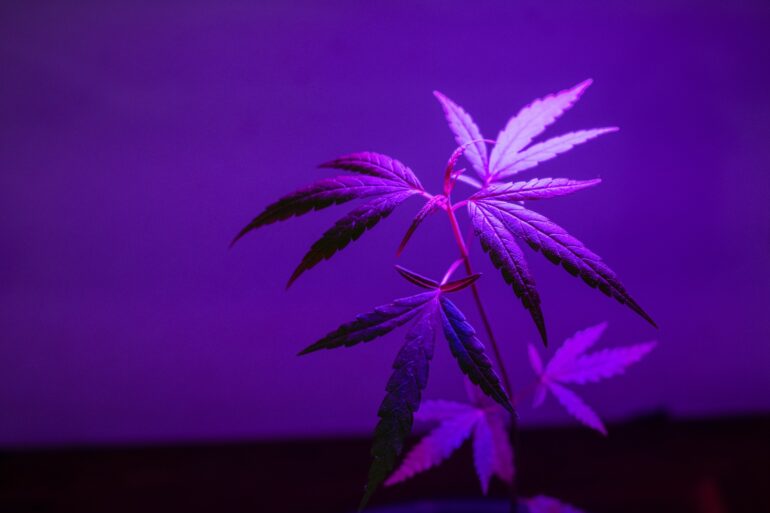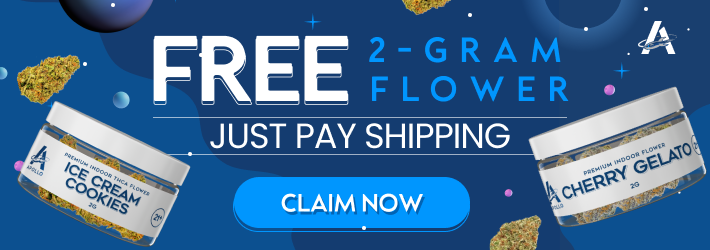Key Takeaways
- Cannabis will be moved from Schedule I to Schedule III, after administrative approvals and a public comment period.
- The move would acknowledge the medical benefits of marijuana while not decriminalizing or legalizing it.
- The biggest benefit is to dispensaries and businesses, who will finally be able to start deducting business expenses from their tax filings.
After literal decades of pressure from anybody paying attention, it looks like marijuana will be removed from Schedule I of the Controlled Substances list.
However, despite the obvious upsides of not classing marijuana alongside substances such as heroin and bath salts in the most restrictive class, the move falls short of decriminalizing or legalizing the drug.
Michael Bronstein, President of the American Trade Association for Cannabis and Hemp (ATACH) told CBD Oracle, “It is historic and potentially the most consequential reform since cannabis was ignominiously placed on the schedule of controlled substances in 1971.”
But what exactly is happening? What does it mean for marijuana to be in Schedule III rather than Schedule I? We’ve collected all the answers you need here.
What Exactly Is Happening? Moving to Schedule III
In Joe Biden’s original presidential campaign, he rightfully stated that “nobody should be in jail just for using or possessing marijuana.” In line with these comments, he took three steps to follow up on that promise:
- Pardoning all federal offenses for simple possession of marijuana
- Encouraging all state governors to do the same
- Asking the Secretary of Health and Human Services and the Attorney General to start the process of reviewing how marijuana is scheduled.
The recent news is the next stage of the third – and most important – step.
The request to reschedule marijuana was passed along to the DEA in September, who ultimately (eventually) agreed with the proposal.
Now the proposal must be reviewed by the White House Office of Management and Budget before being opened up to public comment and a final review by an administrative judge, and then finally published as a final rule.
What Does It All Mean? Why Was Weed Schedule I in the First Place?
Drug scheduling largely depends on two things: potential for abuse and potential for medical use.
Schedule I is really for the drugs most prone to abuse and the most useless for medical purposes.
For example, heroin is highly addictive and doesn’t have medical applications. However, many pharmaceutical opioids such as OxyContin are in Schedule II, because while they also have a high potential for abuse, they do have legitimate medical uses.
This system continues all the way down to Schedule V, where the least potentially addictive, medically useful but still narcotic substances reside, such as cough medicine that has less than 200 mg of codeine per 100 ml of liquid.
Marijuana’s position in Schedule I was pretty much absurd from the start. Over 50 years ago – shortly after the passage of the Controlled Substances Act – the Schafer Commission proposed decriminalization, recommending that, “possession of marijuana for personal use no longer be an offense, [and that the] casual distribution of small amounts of marihuana for no remuneration, or insignificant remuneration, no longer be an offense.”
However, that was not acceptable to the Nixon administration for what were ultimately political reasons, and cynical ones at that. John Ehrlichman, a political aide to Nixon, told a journalist:
The Nixon campaign in 1968, and the Nixon White House after that, had two enemies: the antiwar left and black people. You understand what I’m saying? We knew we couldn’t make it illegal to be either against the war or black, but by getting the public to associate the hippies with marijuana and blacks with heroin, and then criminalizing both heavily, we could disrupt those communities. We could arrest their leaders, raid their homes, break up their meetings and vilify them night after night on the evening news. Did we know we were lying about the drugs? Of course we did.
John Ehrlichman
This is more of an honest summary of the reason marijuana was put in Schedule I than you’re likely to find anywhere. This was never about justice, never about risk and never about true abuse potential.
It barely needs saying at this point, but marijuana is widely considered safer than alcohol (and most other drugs) and marijuana has a multitude of medical uses that are officially recognized by 38 states.
Its position in Schedule I is frankly absurd.
They Haven’t Legalized Weed – Just Made It Less Illegal
It’s important to address one (optimistic) misunderstanding of the coming change: this doesn’t legalize or decriminalize marijuana at the federal level.
In fact, Schedule III is still relatively restrictive, but at least it is more in keeping with current scientific knowledge about the plant.
Practically speaking, the benefits of this change are relatively small if you’re a consumer. Technically, marijuana will still be illegal to possess and ultimately dependent on how the law in your state opts to punish possession (or not).
The biggest change is for businesses. While marijuana remains in Schedule I, businesses cannot deduct business expenses on federal tax filings, meaning that state-legal marijuana businesses often end up paying 70% or more effective tax.
Shifting to Schedule III would solve this problem, undoubtedly boosting profits for many legal businesses and possibly even changing unprofitable ventures into profitable ones.
Michael Bronstein commented on this, noting that, “Businesses are struggling and most of the taxation structures in the legal cannabis industry do not work from a business perspective in the confines of the way cannabis is improperly classified at the federal level. The downstream impact is expected to be enormous for this reason.”
The change will also improve things for researchers. It’s challenging to study a Schedule I controlled substance, and switching to Schedule III would make it much easier to obtain permission for medical and scientific studies.
For the average marijuana advocate, this is possibly the most promising aspect of the change – more research means more understanding and undoubtedly less justification for any type of criminalization.
There is some concern that moving marijuana to Schedule III would mean that medical marijuana would have to meet the requirements usually reserved for pharmaceutical medications.
However, while possible, this is not especially likely. As a Congressional Research Service report notes, there is no reason the rescheduling would impact the medical marijuana appropriations rider that has protected the industry from enforcement since 2015.
It’s a Good Step, But There’s a Long Way to Go
Ultimately, rescheduling marijuana is good, but it’s a long way from being great.
It is still far from a fair approach to a substance safer than alcohol that is legally permitted even for recreational use in about half of the country. However, after 50 years of being as restricted as heroin, it is still a breath of fresh air.
ATACH’s president Michael Bronstein emphasized the significance of the shift, “Think about what we are witnessing: both the US Food and Drug Administration and Drug Enforcement Administration – the most important arms of federal control – are saying marijuana is medicine. This is what we as advocates have evangelized for the last 20 years. It is a statement as bold as it is stunning given the source.”
As NORML’s Deputy Director Paul Armentano commented in a blog post about the rescheduling, “Just as it is intellectually dishonest and impractical to categorize cannabis in the same placement as heroin, it is equally disingenuous and unfeasible to treat cannabis in the same manner as anabolic steroids and ketamine.”
Michael Bronstein also argued that the change doesn’t go far enough, in line with a report released by the Coalition for Cannabis Scheduling Reform:
“The federal government must remove cannabis from the schedule entirely, account for the progress that has been made in state-level markets, and regulate it like alcohol with intoxicating products regulated by the Alcohol and Tobacco Tax and Trade Bureau (TTB) through an MOU [Memorandum of Understanding] with the FDA. And, non-intoxicating products such as CBD, should be given a clear pathway to market through the opening of an FDA channel.”
Finally, while polling results vary, an April 2024 survey found that two-thirds of likely voters in the US support legalizing marijuana for recreational use, and a Gallup poll from late last year put it at 70% of US adults.
Michael Bronstein finished on a hopeful note, “This move also signals that pressure for real federal reform is mounting. Rescheduling is something that just doesn’t give the industry a better today, but the prospect that there will be a better tomorrow.”
Conclusion: Federal Law Will Remain Behind the Times
One thing is clear: while a substantial majority of US adults support legal marijuana and 23 states, Washington D.C. and Guam have legalized it for recreational use, federal law lags behind and continues to create unnecessary conflict.
While states forge a bold, logical path forward, the federal government is consistently several steps behind, wringing its hands while its citizens desperately try to explain that prohibition has failed and dragged it into the 21st century.

